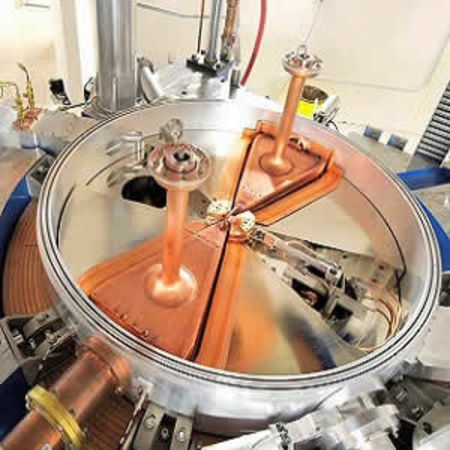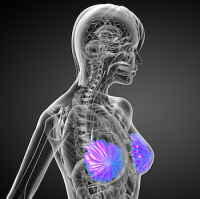Canada’s Chalk River Nuclear Reactor, one of two major producers in the world of technetium-99m (the major medical isotope used for diagnostic procedures), closed down last March. To help counter the facility's closure and prevent isotope supply disruption, University of Alberta scientists have taken a critical step towards producing technetium-99m using a particle accelerator known as a cyclotron.
This innovative method of producing isotopes represents a potential way forward in efforts to ensure a safe supply of medical isotopes that isn’t susceptible to unplanned disruptions, according to researchers at the university’s Medical Isotope and Cyclotron Facility. Their work is described in a report published in the journal Nuclear Medicine and Biology.
Importantly, the U of A method also bypasses public concerns about the use of nuclear reactors.
“One advantage with cyclotron-produced technetium is that the cyclotron is an electrical machine. We don’t produce radioactive waste and it’s very safe. When the electricity stops, the cyclotron stops and there is no hazard to the public,” explained John Wilson, manager of the facility. “There are none of the issues you have with a reactor in terms of public perception, long-term waste and the huge initial cost of construction.”
Technetium-99m, a radioactive tracer that can be detected in the body by medical equipment, is used in about two million procedures a year in Canada and another 20 million in the United States to help diagnose life-threatening diseases, including cancer. Traditionally, it has been supplied through specialised nuclear reactors that produce molybdenum-99, a radioactive isotope that decays to produce the needed technetium-99m on demand.
“Unlike other non-reactor-based methods of producing technetium-99m, the product from the cyclotron is functionally identical to that produced from a reactor. No new equipment or expertise is necessary at the nuclear medicine department,” added Jan Andersson, a researcher at the U of A’s Medical Isotope and Cyclotron Facility. The university's cyclotron can produce enough isotopes for up to 1,000 diagnostic procedures daily.
More than 70 percent of today's diagnostic radiopharmaceuticals are based on technetium, but the supply chain has proven fragile in recent years. In 2009 and 2010, reactors in Canada and the Netherlands unexpectedly went out of service at the same time and required long-term maintenance, causing worldwide shortages and major disruptions in patient care.
According to the U of A researchers, using a cyclotron to produce technetium and other radiopharmaceuticals also offers new opportunities as technological advances lessen the need for technetium in the future.
“It’s my belief that over the next 10 years, technetium imaging will begin to disappear,” said Sandy McEwan, a professor of oncology at the university. “The technology is 50 years old.”
McEwan explained that what can be measured and imaged with technetium has now been outstripped by what can be done with positron emission tomography (PET) imaging.
The cyclotron can produce both technetium and the newer PET imaging isotopes, making it an important transition technology because it means people can run both systems simultaneously while moving their entire fleet of imaging units and scanners to PET.
“When the technetium market dies, technology that is specific for technetium production dies because it can’t be used for anything else,” added Wilson, “whereas a cyclotron can produce a variety of different isotopes for diagnostic imaging that are used in medicine.”
Source: Folio
Image Credit: Medical Isotope and Cyclotron Facility
References:
Andersson JD et al. (2018) Robust High-Yield ~1 TBq Production of Cyclotron Based Sodium [99mTc]Pertechnetate. Nuclear Medicine and Biology. May 2018 Volume 60, Pages 63–70 DOI: https://doi.org/10.1016/j.nucmedbio.2018.02.003
Latest Articles
diagnostic imaging, Cyclotron, medical isotopes
Canada’s Chalk River Nuclear Reactor, one of two major producers in the world of technetium-99m (the major medical isotope used for diagnostic procedures), closed down last March. To help counter the facility's closure and prevent isotope supply disruptio



























